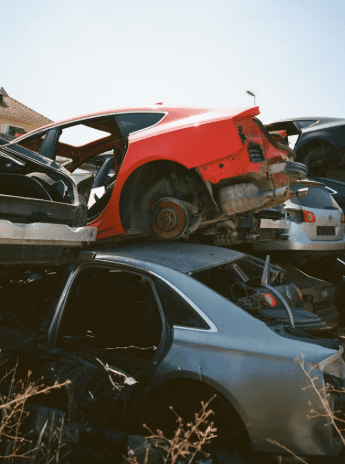
Understanding Liability in Multi-Vehicle Collisions 2025
Multi-vehicle collisions, sometimes called pileups, can be among the most complicated types of car accident claims to pursue. These accidents can involve several drivers, widely conflicting reports, complicated impacts and injuries, and shared liability, making investigating and understanding them a complex and challenging task.
Thoroughly understanding liability in multi-vehicle collisions can be tremendously beneficial as you pursue your claim. Here’s a quick guide to what you need to know.
What Makes Multi-Vehicle Collisions Legally Complex?
Here are some significant reasons why claims involving multi-car accidents are so complicated:
- Multiple Impacts –One car can be struck several times by different vehicles, meaning each car contributed to the overall damage for which the driver will seek compensation.
- Conflicting Accounts – These accidents are chaotic, overwhelming, and involve several parties with different perspectives. Accounts tend to vary, sometimes widely.
- Reconstruction Challenges – The sheer chaos of these collisions can make it challenging to piece together how it began, who might be responsible for what, and what actually happened.
Common Scenarios and Causes of Multi-Car Accidents
Here are some of the most common reasons multi-vehicle accidents occur:
Chain Reaction Crashes
In high-traffic areas, it only takes one person suddenly slamming on their brakes for a pileup to begin. However, the driver who hit their brakes first is not always to blame. Timing, distance, and weather are all factors when determining liability.
Intersection Accidents
If a driver runs a red light or fails to yield, multiple cars entering the intersection from different directions can collide. This can cause secondary crashes for drivers approaching the intersection behind those vehicles.
Weather-Related Pileups
Fog, ice, and heavy rain reduce visibility and traction, significantly increasing the risk of an accidents. Once a single accident occurs, the reduced visibility and traction means it can be difficult for other vehicles to stop in time, often resulting in large pileups.
Distracted Driving
Texting, GPS use, and infotainment systems are all growing causes of accidents. One distracted driver can be enough to create a multi-car accident, particularly on highways or during rush hour.
How Liability Is Determined: Key Legal Principles
How liability in multi-car accidents is determined varies from state to state. Here are some key details:
Comparative vs. Contributory Negligence
Your ability to recover compensation in a car accident is impacted by your state’s system for determining responsibility, which will be one of the following:
- Pure Comparative Negligence – A pure comparative negligence system allows recovery even if you’re 99 percent at fault. The court will reduce your compensation based on the percentage of fault it finds you bear.
- Modified Comparative Negligence – Georgia is one of the states that follows a modified version of the comparative negligence doctrine. In this type of system, the law entitles a victim to recover compensation only if they bear less than a specific percentage of the fault. In Georgia, anyone less than 50 percent at fault is entitled to recover damages.
- Contributory Negligence – The contributory negligence system is rare, and also the strictest approach to awarding compensation. Under this system, anyone who is even 1 percent at fault for causing an accident cannot recover any compensation.
Joint and Several Liability
Some states apply what’s known as joint and several liability when multiple parties bear the same responsibility for an injury. In this system, an injured party can recover the same compensation from each liable party rather than a fraction from each based on their percentage of fault.
Primary vs. Secondary Fault
In multi-car accidents, courts may assign primary fault to the driver whose actions started the chain of events, but can also assign secondary fault to drivers who contributed to the accident after that. For instance, if someone was speeding and couldn’t avoid the crash because of it, they may be assigned secondary fault.
Gathering and Analyzing Evidence in Multi-Vehicle Claims
Substantial evidence is the foundation of all successful car accident claims. Your attorney will likely gather the following when building your case:
- Police Reports –While not always complete or accurate, police reports represent a strong starting point for establishing liability and proving your claim.
- Dashcams or Traffic Cams – Video footage of the accident in progress can provide some of the most convincing evidence. Your attorney will seek out any surveillance, traffic cam, or dashcam footage that shows the exact sequence of events.
- Witness Statements – Third parties can offer objective accounts of the accident, lending credibility to your claim when other drivers offer conflicting versions of events.
- Forensic Analysis – Accident reconstruction experts can examine skid marks, vehicle damage, vehicle resting positions, points of impact, the timing of airbag deployment, and debris to illustrate how the accident happened and who may be at fault.
When to Hire a Personal Injury Attorney in a Multi-Vehicle Case
Pursuing a car accident claim alone can be a tremendous challenge, no matter how many cars were involved. However, there’s no doubt that multi-car accidents are exponentially more challenging. Here’s how to know when it’s time to call a lawyer:
Multiple Parties Are Blaming Each Other
It’s a lot easier to deflect blame in a multi-car crash, which means it happens often. When everyone is pointing fingers, it’s time to lawyer up, especially when those fingers are pointed at you. Your attorney can investigate the accident to determine who truly bears responsibility.
You Have Significant Injuries and Large Medical Bills
Serious injuries don’t just cost a fortune in medical bills. They also keep you from earning a living, compounding your financial issues significantly. Your attorney can work with medical professionals to assess the true impact of your injuries and seek maximum compensation for them.
Insurers Are Trying to Push You Around
Insurance companies will do everything possible to minimize your payout, including delaying, denying, or undervaluing your claim. They want to wear you down, convince you to take a lowball settlement, or even deny your claim altogether. Your attorney can protect you from these tactics and fight for a fair settlement.
Need Help Understanding Liability in Multi-Vehicle Collisions? Contact a Multi-Vehicle Accident Lawyer Today
If you’ve suffered injuries in a multi-car crash caused by someone else’s negligence, you need an experienced personal injury attorney to protect your rights. The Scott Pryor Law Group knows just how complicated these cases can get, and we’re ready to take on the multi-party negotiations, complex liability considerations, and potential litigation required to seek the compensation you deserve. Contact us today for your free consultation.
Photo by Scott Greer on Unsplash











